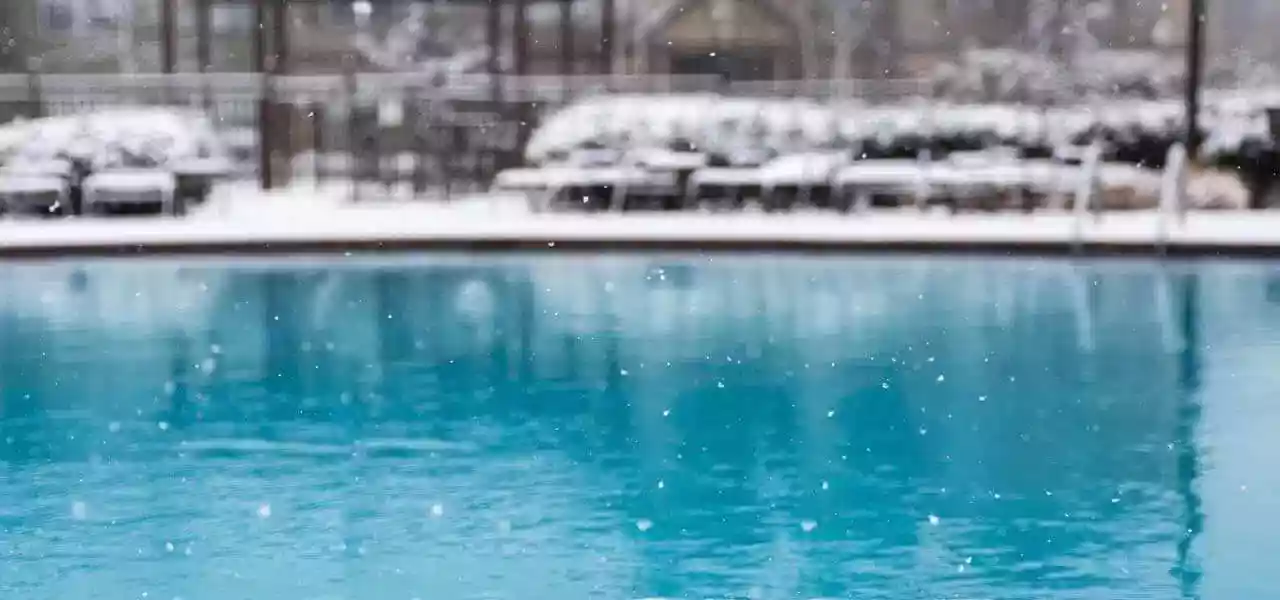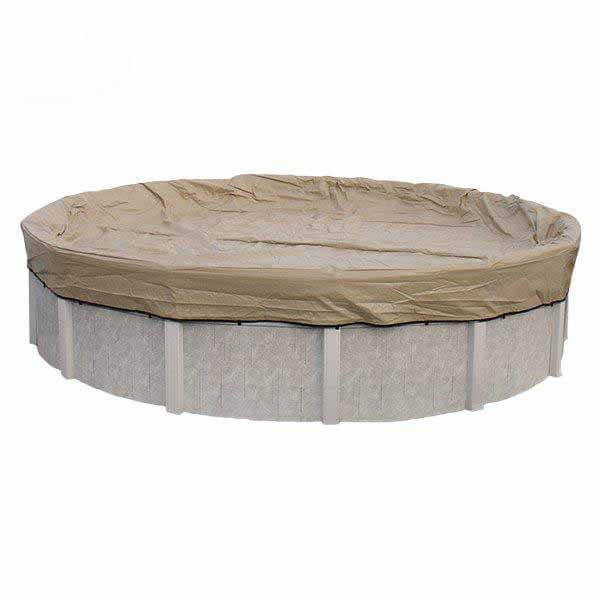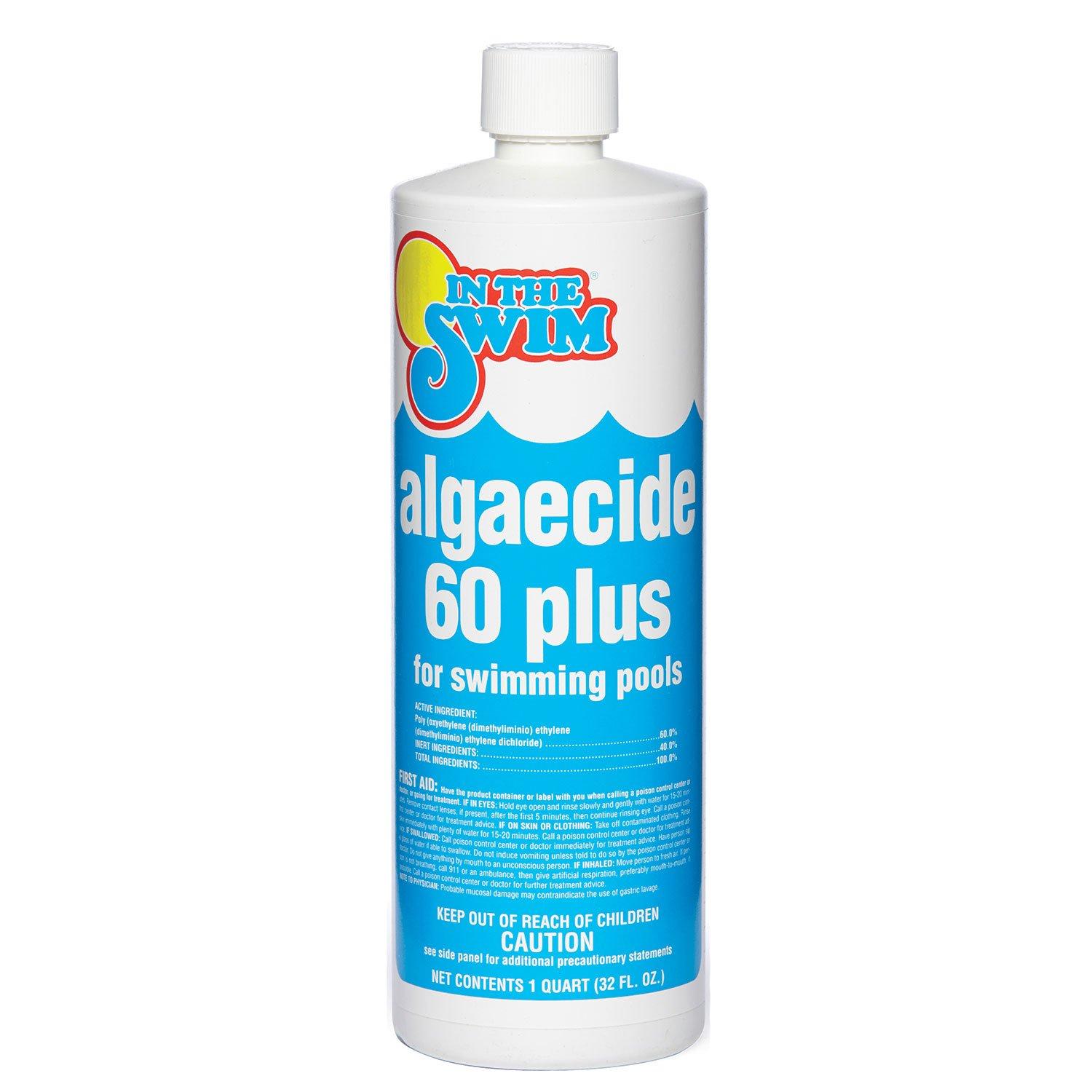FREE Standard Shipping On All Orders $100 or More!*

Can I Keep My Pool Uncovered All Winter?
A popular debate among pool owners is whether to use a winter pool cover or not. Some folks swear by it, while others think it's unnecessary, and even unsightly. But does covering your pool make that much of a difference? Are you risking too much by going the uncovered pool route?
Those are valid questions, ones that often leave pool owners scratching their heads, and concerned that they're not doing what's best for their pool. That's why we're here — to discuss the best practices for your pool and if you truly need a winter pool cover.
Do You Have to Use a Winter Pool Cover?

In short, no you don't. Your pool won't be damaged beyond repair or needing a major cleanup if you choose to go without a winter cover. But winter swimming pool covers protect your pool against an array of problems that you likely don't want to deal with come pool opening season.
Stains, scaling, algae growth, and imbalanced water chemistry are just a few dilemmas that can arise if you don't use a winter pool cover. Pool covers block both debris and sunlight from entering your pool — conserving winter chemicals and protecting the pool's structure.
We recommend using a winter pool cover to provide your pool with the best protection possible over the chill months. However, if you decide to keep your winterized pool uncovered for whatever reason, follow the steps below to guarantee a clean, healthy pool when it's time to reopen it.
1. Keep the Pool Clean
With the pumps and pipes winterized, you can't vacuum the pool through the system. But that doesn't mean you can't keep your pool clean! Use a leaf rake to skim your pool and remove any leaves, bugs, and other debris from the water. Grab a pool brush to scrub the walls and floor of your pool and circulate the water.
2. Test and Balance the Water
Use a test kit or strips to check the pool water once a week. Rain and snow will enter your pool without a winter swimming pool cover, damaging the water and chemicals, like pH, Total Alkalinity and Calcium Hardness. In addition, be sure that your Cyanuric Acid level is up to 50 ppm, to protect your chlorine from the sun. To add chemicals to an uncovered pool during winter, pre-dissolve by adding to a bucket filled with water, then pour the solution around the edge. Brush the pool well afterwards, to help dissolve and disperse the adjustment chemical.
3. Use Chlorine and Algaecide 
Keep your chlorine level up in the pool by filling a chlorine floater (or two), with tablets, and floating them in the pool with the baffles fully closed. Refill the floaters every few months, and test the water regularly to maintain 1 ppm of chlorine. For winter algaecide, add an initial dose of 1 qt per 10000 gallons, and a weekly maintenance dose of a good winter pool algaecide, like Algaecide 60 Plus. If you notice algae growing in early fall or late spring, shock the pool with a heavy dose of your favorite pool shock, and brush well. When the pool is frozen solid, or has water temperatures in the 40's - you won't need much chlorine or algaecide.
4. Open the Pool Early
When the water temperature rises, and sunny days grow longer, it can be hard to control algae growth without a pool cover. So plan on opening the pool about a month before normal, or when the water temperature rises into the 60's. While the water is still below 65°F, you can run the pool pump less, 4–6 hours per day, to maintain clear water.
A winter swimming pool cover is an important piece of winter pool equipment, but not a necessary one. If you elect to go without one, keep your pool clean and healthy by following the steps above. A clean, closed winter pool means a clean, open summer pool!
Recommended Products for Uncovered Pools
Final Thoughts
While it’s possible to leave your pool uncovered all winter, it requires consistent maintenance and chemical monitoring. If you’re up for the challenge, follow the steps above to minimize damage and ensure a smoother spring opening.
Best Practice: Use a winter pool cover to save time, money, and effort in the long run.